But... The Clouds
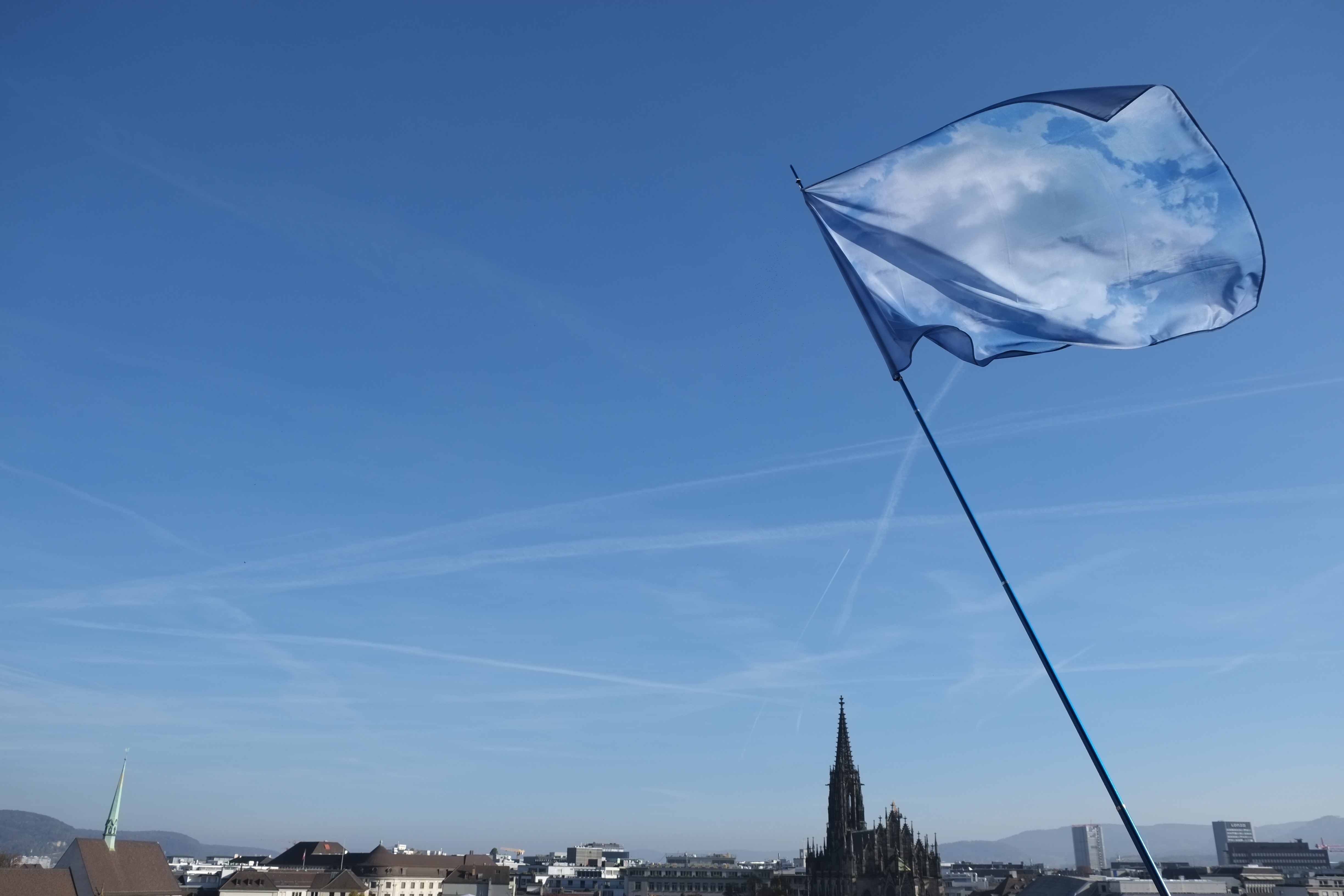
Basel, Gymnasium Léonard, dans le cadre de BORDER CROSSING, commissaire Martina Siegwolf, Regionale 2017
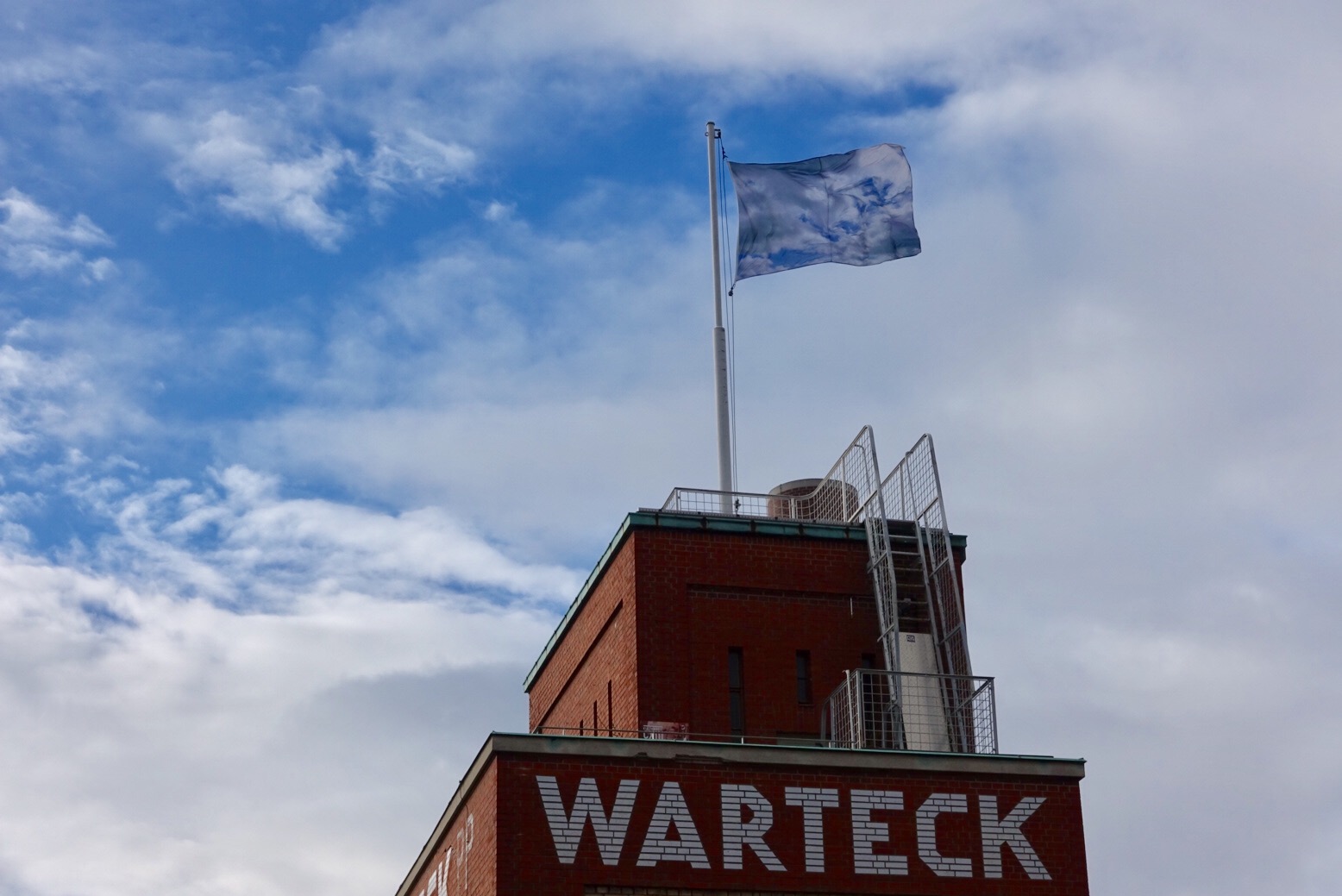
Warteck, Basel, dans le cadre de BORDER CROSSING, commissaire Martina Siegwolf, Regionale 2017
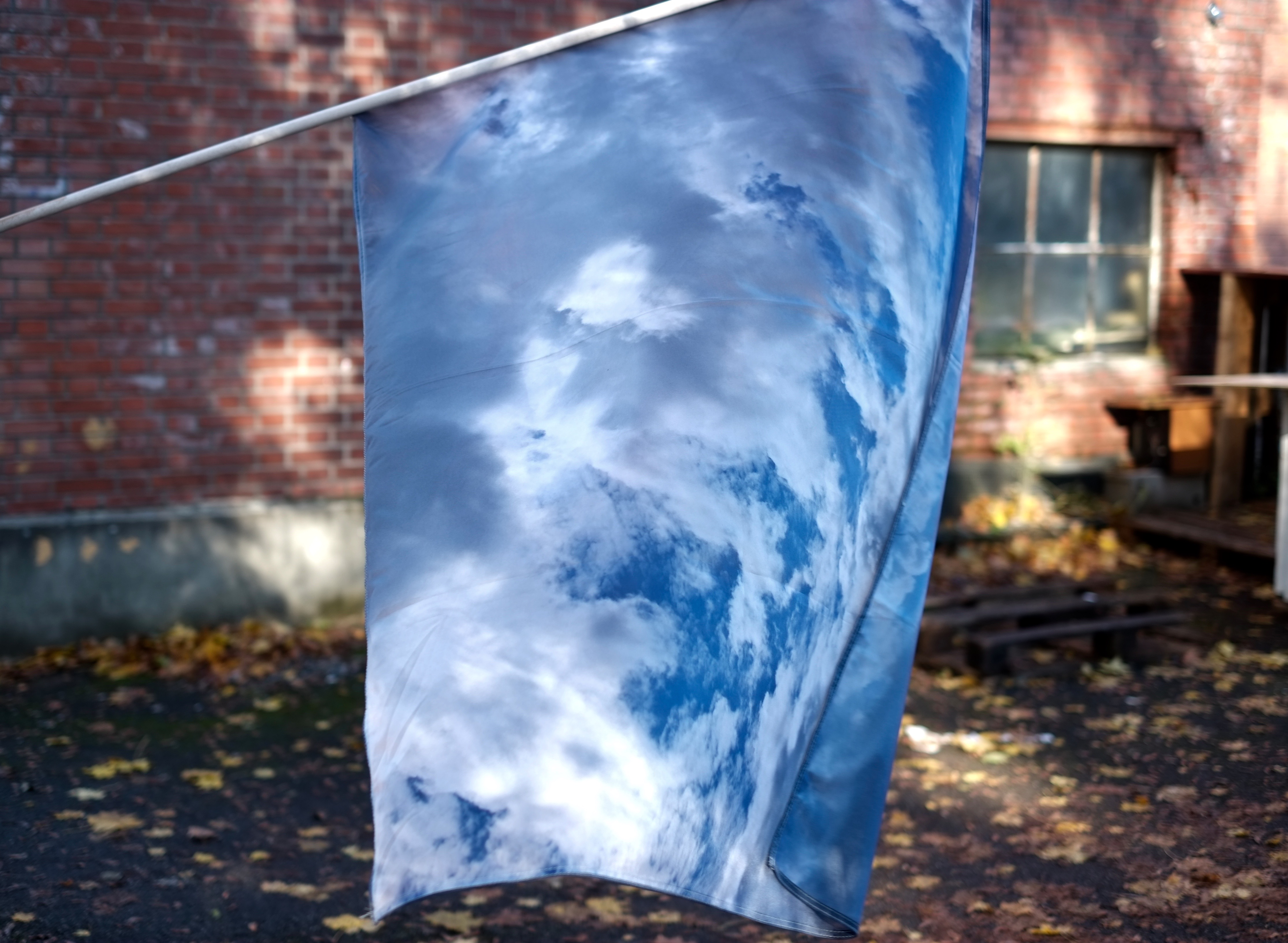
Motoco, Mulhouse, dans le cadre de BORDER CROSSING, commissaire Martina Siegwolf, Regionale 2017
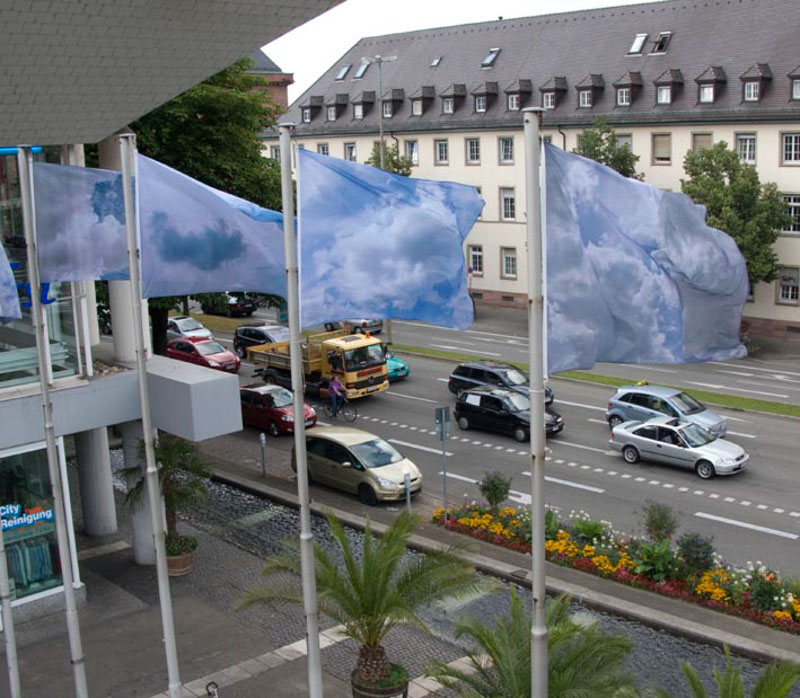
Freiburg (DE), 2012, dans le cadre de TWIN CITIES, avec le CCFF et la Kunsthalle Mulhouse
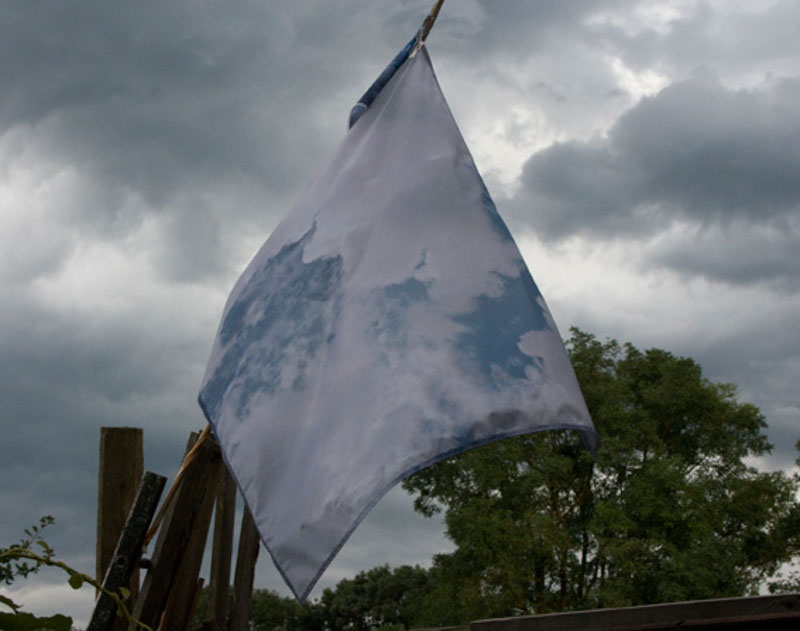
Jardin ouvrier, Lorraine, 2015
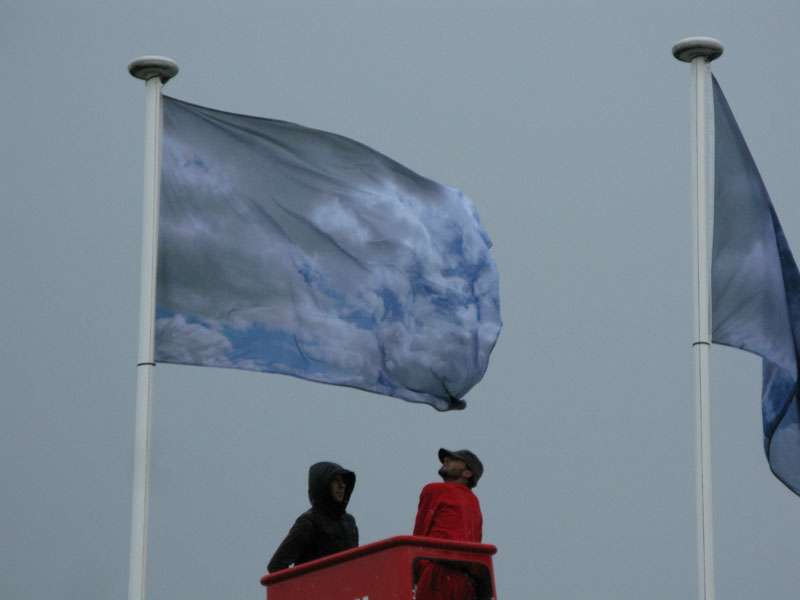
Mulhouse 2012, dans le cadre de TWIN CITIES, projet avec la Kunsthalle Mulhouse
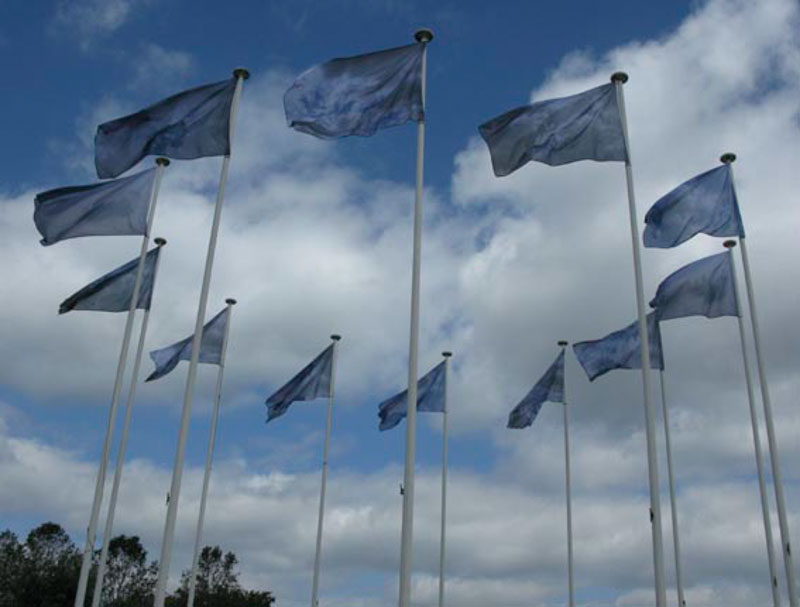
Mulhouse 2012, dans le cadre de TWIN CITIES, projet avec la Kunsthalle Mulhouse
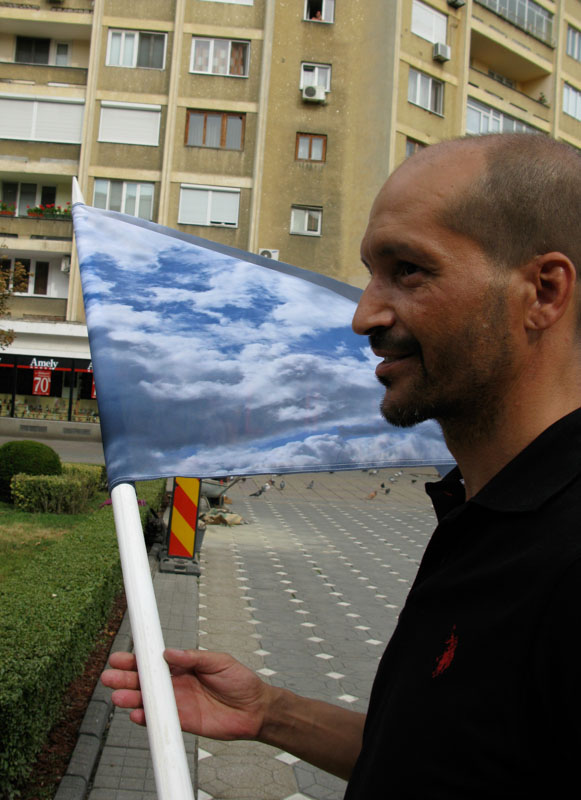
Timisoara, 2012 dans le cadre de TWIN CITIES, projet avec la Kunsthalle Mulhouse
The idea to print clouds on flag was born in 2009. I was invited for an installation in a very little village called Wattwiller (France). The flags were installed at the windows of the local inhabitants, as happens during the Fête National, notably along the road which leads to Vieil Armand, a memorial to the first World War, a battle site on which 30,000 lost their lives.
Clouds, through their lightness and their movement, symbolize freedom. Clouds fascinate us as they are fleeting, intangible, almost immaterial. They deny the concrete and the mundane. The image of clouds always takes us elsewhere, further away, beyond human borders, beyond that which forms the foundations of society (family, economy, religion, patriotism) in the same way as the outsider who is questioned in Charles Baudelaire’s poem. The outsider is a travelling man, with no ties. Asked about what he loves best, he rejects family, friends, homeland, beauty and wealth before concluding: “I love clouds….. clouds which pass … over there … the marvelous clouds!”
Clouds embody freedom, they violate defined territories. Clouds act as a call towards infinity, beyond the borders established by mankind, whether they be real or symbolic borders.
I spent the summer of 2011 visiting Mulhouse’s sister towns. I photographed clouds in the german sister towns : Chemnitz, Kassel and in the Romanian sister town Timisoara and I created the cloud-flags designed to replace national and official flags in each of these towns.
The cloud-flags are not patriotic symbols, but they raise questions about communities, national identity, cross-border flow and fraternity. The aim of the flags is to redefine the notion of town twinning by giving new meaning to these relationships beyond their formal and economic dimensions. Human realities and shared memory are at the heart of the artistic project.
National flags symbolize a country, a nation. Historically, for all peoples, the flag symbolizes joy and pain, victory and defeat: ”it is us, in its entirety. The material in itself is nothing: canvas, silk or tin plate, the idea which is attached to it is everything. And this idea is that of Homeland.” (Hacks/Linarès History of the French Flag). The cloud-flag doesn’t convey the idea of Homeland, but that of humanity. The use and positioning of flags conform to precise, codified rules. The installation of the cloud-flags makes explicit reference to the use of national flags, by modifying their meaning. This is why their size as well as their arrangement on the masts are as those of official flags. In Freiburg (Germany) and Mulhouse (France), the cloud-flags replaced the European Flags.
In conjunction with the installations But… The Clouds, "TWIN CITIES", a publication of 4 editions was published (Kunsthalle edition, 2012). For each town a cloud picture was chosen and printed for the cover of each edition. It was the same cloud as the one on the flag. The book's themes were inspired by the cloud-flag signification.
Clouds, through their lightness and their movement, symbolize freedom. Clouds fascinate us as they are fleeting, intangible, almost immaterial. They deny the concrete and the mundane. The image of clouds always takes us elsewhere, further away, beyond human borders, beyond that which forms the foundations of society (family, economy, religion, patriotism) in the same way as the outsider who is questioned in Charles Baudelaire’s poem. The outsider is a travelling man, with no ties. Asked about what he loves best, he rejects family, friends, homeland, beauty and wealth before concluding: “I love clouds….. clouds which pass … over there … the marvelous clouds!”
Clouds embody freedom, they violate defined territories. Clouds act as a call towards infinity, beyond the borders established by mankind, whether they be real or symbolic borders.
I spent the summer of 2011 visiting Mulhouse’s sister towns. I photographed clouds in the german sister towns : Chemnitz, Kassel and in the Romanian sister town Timisoara and I created the cloud-flags designed to replace national and official flags in each of these towns.
The cloud-flags are not patriotic symbols, but they raise questions about communities, national identity, cross-border flow and fraternity. The aim of the flags is to redefine the notion of town twinning by giving new meaning to these relationships beyond their formal and economic dimensions. Human realities and shared memory are at the heart of the artistic project.
National flags symbolize a country, a nation. Historically, for all peoples, the flag symbolizes joy and pain, victory and defeat: ”it is us, in its entirety. The material in itself is nothing: canvas, silk or tin plate, the idea which is attached to it is everything. And this idea is that of Homeland.” (Hacks/Linarès History of the French Flag). The cloud-flag doesn’t convey the idea of Homeland, but that of humanity. The use and positioning of flags conform to precise, codified rules. The installation of the cloud-flags makes explicit reference to the use of national flags, by modifying their meaning. This is why their size as well as their arrangement on the masts are as those of official flags. In Freiburg (Germany) and Mulhouse (France), the cloud-flags replaced the European Flags.
In conjunction with the installations But… The Clouds, "TWIN CITIES", a publication of 4 editions was published (Kunsthalle edition, 2012). For each town a cloud picture was chosen and printed for the cover of each edition. It was the same cloud as the one on the flag. The book's themes were inspired by the cloud-flag signification.
FR : "But…the clouds" est une dissémination de drapeaux-nuages à l’échelle mondiale. En tant que symbole de la Nation, le drapeau rassure, car il affirme la continuité malgré les évolutions économiques et sociales. Pour le projet "But…the clouds", Anne Immelé a associé le nuage au drapeau. Ce drapeau-nuage n’incarne plus une attache nationale rassurante, mais donne à voir la mouvance même, il ne véhicule pas l’idée de Patrie, mais celle d’Humanité, en écho à l’importance du transfrontalier, du flux et de l’échange entre tous les peuples. Ce drapeau questionne le rapport entre l’universel et le particulier, entre le local et le global.
Le drapeau-nuage est aussi un appel poétique. L’image des nuages nous emmène toujours ailleurs, plus loin, par-delà les frontières des hommes, par-delà ce qui fonde la société même (famille, économie, religion, patriotisme) à l’instar de cet étranger que l’on interroge dans le poème de Charles Baudelaire. L’étranger est un homme de passage, il est sans attaches. Interrogé sur ce qu’il aime le mieux, il récuse la famille, les amis, la patrie, la beauté et la richesse, avant de conclure : « J’aime les nuages… les nuages qui passent… là-bas… les merveilleux nuages ! ». Les nuages incarnent la liberté, ils transgressent les territoires définis. Les nuages agissent comme appel vers l’infini, par-delà les frontières érigées par les hommes, qu’il s’agisse de frontières réelles ou symboliques.
En lien avec les installations in situ des drapeaux-nuage, la Kunsthalle de Mulhouse a édité les "Twin Cities". Cette édition en 4 volumes pose des questions liées aux communautés, aux identités nationales, aux flux transfrontaliers et à la fraternité. Elle propose de réinvestir la notion de jumelage entre des villes, de donner du sens à des relations parfois trop protocolaires et principalement basées sur des considérations économiques. Les drapeaux-nuages ont été installés dans différentes lieux, notamment à l'entrée du FRAC Lorraine en 2012.
Le drapeau-nuage est aussi un appel poétique. L’image des nuages nous emmène toujours ailleurs, plus loin, par-delà les frontières des hommes, par-delà ce qui fonde la société même (famille, économie, religion, patriotisme) à l’instar de cet étranger que l’on interroge dans le poème de Charles Baudelaire. L’étranger est un homme de passage, il est sans attaches. Interrogé sur ce qu’il aime le mieux, il récuse la famille, les amis, la patrie, la beauté et la richesse, avant de conclure : « J’aime les nuages… les nuages qui passent… là-bas… les merveilleux nuages ! ». Les nuages incarnent la liberté, ils transgressent les territoires définis. Les nuages agissent comme appel vers l’infini, par-delà les frontières érigées par les hommes, qu’il s’agisse de frontières réelles ou symboliques.
En lien avec les installations in situ des drapeaux-nuage, la Kunsthalle de Mulhouse a édité les "Twin Cities". Cette édition en 4 volumes pose des questions liées aux communautés, aux identités nationales, aux flux transfrontaliers et à la fraternité. Elle propose de réinvestir la notion de jumelage entre des villes, de donner du sens à des relations parfois trop protocolaires et principalement basées sur des considérations économiques. Les drapeaux-nuages ont été installés dans différentes lieux, notamment à l'entrée du FRAC Lorraine en 2012.